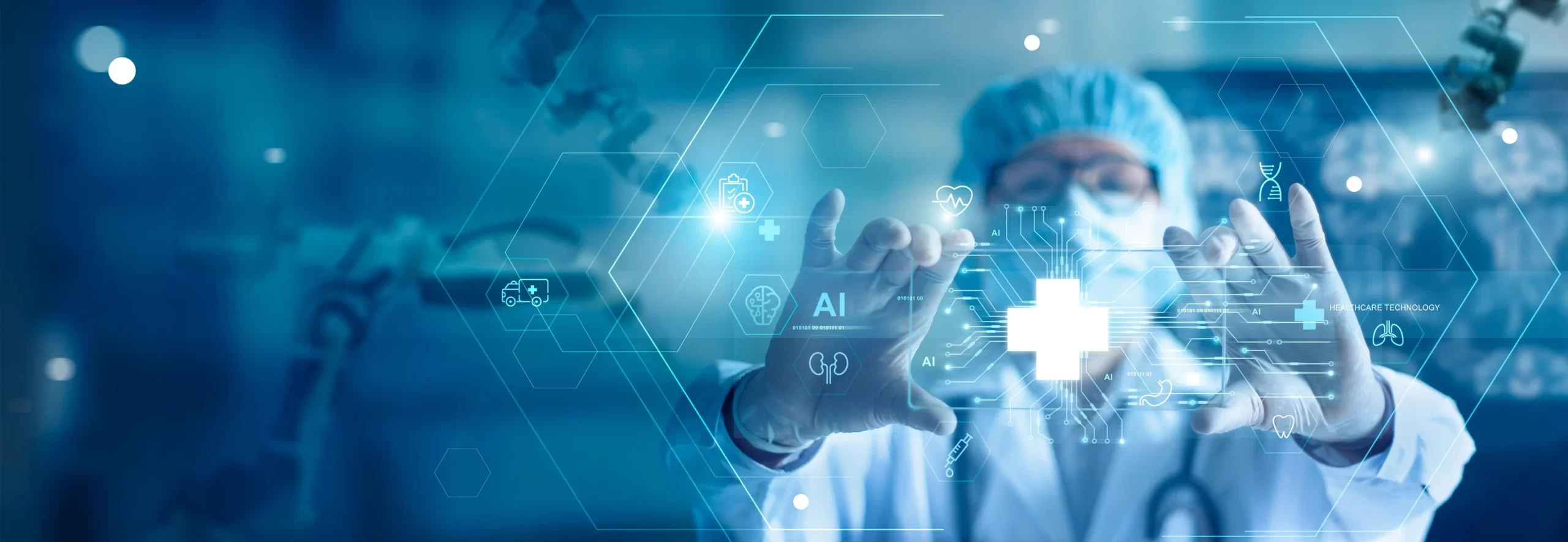
Health Information Technology (HIT) encompasses various technologies designed to store, share, and analyze health information. This includes electronic health records (EHRs), telemedicine, health information exchanges (HIEs), and mobile health applications. Over the past few decades, the adoption of HIT has significantly transformed the healthcare landscape, improving the quality of care, patient outcomes, and operational efficiencies. This blog delves into the economic impact of HIT, examining how it influences healthcare costs, efficiency, patient care, and overall economic growth.
Understanding Health Information Technology (HIT)
Health Information Technology refers to using information and communication technology in healthcare settings. It includes:
- Electronic Health Records (EHRs): Digital versions of patients’ paper charts, providing real-time, patient-centered records.
- Telemedicine: Remote diagnosis and treatment of patients through telecommunications technology.
- Health Information Exchanges (HIEs): Systems that allow the secure sharing of health information across different healthcare organizations.
- Mobile Health (mHealth): Healthcare services delivered or enhanced through mobile devices.
- Clinical Decision Support Systems (CDSS): Tools that provide healthcare providers with knowledge and patient-specific information to enhance decision-making.
The Evolution of HIT
Advancements in technology, regulatory changes, and the growing need for efficient healthcare delivery have driven the evolution of HIT. Key milestones in HIT evolution include:
- 1960s-1970s: The advent of early computer systems in healthcare for administrative functions.
- 1980s-1990s: Development of more sophisticated clinical applications and the introduction of EHRs.
- 2000s-Present: Widespread adoption of EHRs, telemedicine, and mobile health applications, driven by government incentives and the push for interoperability.
Economic Impact on Healthcare Costs
Cost Savings and Efficiency
One of HIT’s most significant economic impacts is its potential to reduce healthcare costs and improve efficiency. This can be achieved through:
- Administrative Efficiency: Automating administrative tasks such as scheduling, billing, and coding reduces labour costs and errors.
- Reduced Duplication of Services: EHRs and HIEs prevent unnecessary duplicate tests and procedures by providing comprehensive patient histories.
- Improved Resource Utilization: Telemedicine and remote monitoring reduce the need for in-person visits, optimizing the use of healthcare resources.
Case Studies and Examples
Several studies and real-world examples highlight the cost-saving potential of HIT:
- Kaiser Permanente: The integration of EHRs and telemedicine at Kaiser Permanente has significantly reduced hospital admissions and emergency room visits, resulting in substantial cost savings.
- Veterans Health Administration (VHA): The VHA’s adoption of EHRs and telehealth services has improved care coordination and reduced healthcare costs by decreasing hospital readmissions and medication errors.
Challenges and Considerations
While HIT offers substantial cost-saving potential, its implementation and maintenance can be costly and complex. Challenges include:
- Initial Investment: High upfront costs for purchasing and implementing HIT systems.
- Ongoing Maintenance: Continuous updates and maintenance require ongoing financial investment.
- Interoperability Issues: Lack of standardization and interoperability between HIT systems can hinder cost savings and efficiency.
Impact on Quality of Care and Patient Outcomes
Enhanced Patient Safety
HIT significantly enhances patient safety by reducing medical errors and improving care coordination. Key contributions include:
- EHRs: Provide accurate, up-to-date patient information, reducing the risk of medication errors and adverse drug interactions.
- Clinical Decision Support Systems (CDSS): Assist healthcare providers in making evidence-based decisions, reducing diagnostic errors.
Improved Patient Outcomes
HIT contributes to better patient outcomes through:
- Chronic Disease Management: Telemedicine and remote monitoring enable continuous management of chronic conditions, leading to better health outcomes.
- Preventive Care: EHRs and CDSS facilitate preventive care measures, such as vaccinations and screenings, reducing the incidence of preventable diseases.
Case Studies and Examples
Examples of improved patient outcomes through HIT include:
- Cleveland Clinic: EHRs and telemedicine have improved chronic disease management, leading to better patient outcomes and reduced hospitalizations.
- Mayo Clinic: Implementation of CDSS has enhanced diagnostic accuracy and patient safety, resulting in better clinical outcomes.
Economic Impact on Healthcare Providers
Operational Efficiency
HIT improves operational efficiency for healthcare providers by:
- Streamlining Workflows: Automating administrative and clinical workflows reduces the time and effort required for various tasks.
- Reducing Paperwork: Digital records and electronic communication minimize paperwork, allowing healthcare providers to focus more on patient care.
Financial Performance
HIT positively impacts the financial performance of healthcare providers through:
- Revenue Cycle Management: Efficient billing and coding processes enhance revenue cycle management, reducing claim denials and improving cash flow.
- Cost Savings: Reduced duplication of services, improved resource utilization, and lower administrative costs contribute to overall cost savings.
Case Studies and Examples
Examples of improved operational efficiency and financial performance include:
- Geisinger Health System: Implementation of EHRs and integrated health IT systems has streamlined operations and improved financial performance.
- Intermountain Healthcare: The adoption of CDSS and telehealth services has enhanced operational efficiency and reduced costs, contributing to better financial outcomes.
Economic Impact on Patients
Reduced Healthcare Costs
HIT lowers healthcare costs for patients through:
- Avoidance of Duplicate Tests: Comprehensive patient records prevent unnecessary duplicate tests and procedures.
- Remote Monitoring: Telemedicine and remote monitoring reduce the need for in-person visits, saving travel and time costs.
Improved Access to Care
HIT enhances access to care by:
- Telemedicine: Provides access to healthcare services for patients in remote or underserved areas.
- mHealth Applications: Empower patients to manage their health through mobile applications, improving access to health information and services.
Case Studies and Examples
Examples of reduced healthcare costs and improved access to care include:
- Teladoc Health: Telemedicine services offered by Teladoc have improved access to care and reduced healthcare costs for patients.
- MyFitnessPal: mHealth applications like MyFitnessPal empower patients to manage their health, leading to better health outcomes and reduced healthcare costs.
Economic Impact on the Broader Economy
Job Creation and Economic Growth
HIT drives job creation and economic growth by:
- Healthcare IT Jobs: Demand for healthcare IT professionals, such as EHR specialists, data analysts, and cybersecurity experts, has increased.
- Technology Sector Growth: The development and deployment of HIT systems contribute to the technology sector’s growth.
Increased Productivity
HIT enhances productivity across the healthcare sector by:
- Efficient Healthcare Delivery: Streamlined workflows and improved care coordination enhance overall productivity in healthcare delivery.
- Economic Output: Improved health outcomes and reduced healthcare costs increase economic output and productivity.
Case Studies and Examples
Examples of job creation and economic growth through HIT include:
- Cerner Corporation: The growth of healthcare IT companies like Cerner has created numerous jobs and contributed to economic growth.
- Epic Systems: The widespread adoption of Epic’s EHR systems has driven job creation and increased productivity in healthcare organizations.
Future Trends and Implications
Artificial Intelligence and Machine Learning
The integration of artificial intelligence (AI) and machine learning (ML) into HIT is expected to further transform healthcare by:
- Predictive Analytics: AI and ML can analyze large datasets to predict health trends and identify at-risk patients, improving preventive care.
- Personalized Medicine: AI-driven insights enable customized treatment plans, enhancing patient outcomes and reducing costs.
Blockchain Technology
Blockchain technology has the potential to revolutionize HIT by:
- Secure Data Sharing: Blockchain ensures secure, transparent, and tamper-proof sharing of health information.
- Patient Empowerment: Blockchain can give patients greater control over their health data, enhancing privacy and security.
Internet of Things (IoT)
The Internet of Things (IoT) is set to enhance HIT through:
- Connected Devices: IoT devices like wearable health monitors enable continuous health monitoring and real-time data collection.
- Improved Care Coordination: IoT devices facilitate seamless communication and data exchange between healthcare providers, improving care coordination.
Telehealth and Remote Monitoring
The future of telehealth and remote monitoring looks promising with advancements in:
- 5G Technology: Faster and reliable internet connections enable high-quality telehealth services and real-time remote monitoring.
- Virtual Reality (VR) and Augmented Reality (AR): VR and AR can enhance telehealth consultations and remote training for healthcare providers.
Health Information Technology (HIT) profoundly impacts various aspects of the healthcare system and the broader economy. From reducing healthcare costs and improving operational efficiency to enhancing patient outcomes and driving economic growth, HIT plays a pivotal role in transforming healthcare delivery. As technology continues to evolve, the future of HIT holds immense potential for further improving healthcare quality, accessibility, and affordability. By embracing and investing in HIT, healthcare organizations, providers, and policymakers can ensure a sustainable and efficient healthcare system that meets the needs of patients and society.



